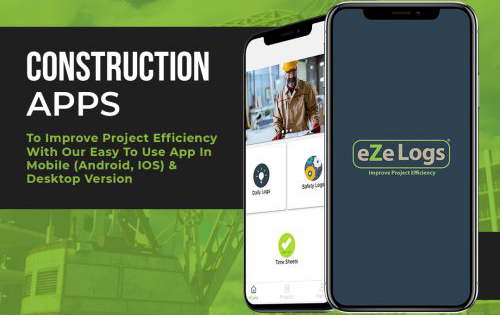Enterprise Project Risk Management (EPRM) systems are no longer “nice-to-have” tools buried in a PMO’s digital arsenal. They are now front-and-center in enabling public infrastructure organizations to survive the increasingly high-stakes environment of 21st-century capital delivery.

The volume of megaprojects is rising, funding sources are shifting, and political visibility is constant. As the infrastructure sector braces for climate volatility, labor scarcity, and cyber risk, EPRM platforms must be built—not just to handle today’s load—but to scale and evolve through 2030 and beyond.
1. Modular Architecture with Real-Time Interoperability
EPRM platforms must transition from rigid, monolithic designs to modular frameworks that support plug-and-play integrations. As tools like ArcGIS, Bentley iTwin, and Primavera P6 evolve independently, EPRMs should facilitate open APIs, real-time data synchronization, and flexible schema mapping between new and legacy systems.
For instance, some government organizations are developing integration pipelines that enable real-time budget and schedule alignment across P6 and internal finance platforms. This modularity ensures that future tools—such as AI-driven predictive analytics or 3D model coordination—can be adopted without necessitating complete system overhauls.
2. Dynamic Risk Modeling Across Project Lifecycles
Static risk logs managed on spreadsheets are no longer sufficient. Future-ready EPRMs must enable dynamic risk modeling that captures early signals, adjusts exposure as projects progress, and offers linked mitigations tied to cost and schedule impacts.
Agencies like the Port Authority of New York and New Jersey are moving toward probabilistic risk engines that evaluate not just discrete risks (e.g., permitting delays) but also cascading ones (e.g., permitting delays triggering seasonal labor shifts, which then impact material access). [Source]
3. Role-Based Access with Federated Security Protocols
By 2030, public infrastructure organizations will face heightened scrutiny regarding data access, cybersecurity, and system integrity. A future-ready EPRM must support granular role-based access control (RBAC) and allow for federated identity protocols that function across agencies, contractors, and third-party consultants.
This approach ensures that a consultant working on a transit line in one region cannot access documents related to an unrelated project elsewhere, thereby maintaining data security and integrity.
4. Embedded AI for Schedule and Cost Intelligence
Forecasting must evolve beyond lagging indicators. Agencies managing multi-year, multi-phase programs require intelligent forecasting tools embedded within their EPRMs to highlight schedule compression risks, flag underestimated line items, and detect performance drifts before they escalate.
The Los Angeles Department of Water and Power has begun integrating machine learning models into its EPRM layer, utilizing historical cost overruns, contractor performance data, and seasonal patterns to inform decision-making and reduce guesswork. [Source]
5. Structured Data Governance from Day One
Many EPRM failures stem from inadequate data structures rather than software issues. A future-proof platform must enforce structured data governance from the outset, including naming conventions, status definitions, version control, metadata tagging, and data retention protocols.
The San Francisco Public Utilities Commission mandates that every capital project adhere to a standardized data schema for cost codes, project phases, and stakeholder roles, facilitating cross-program reporting and ensuring a consistent, audit-friendly dataset. [Source]
6. Built-in Compliance Logic for Federal and State Funding
As agencies increasingly rely on infrastructure stimulus programs and green energy funding, EPRM platforms must incorporate compliance logic tailored to each funding stream. Managing these requirements in spreadsheets is prone to errors and inefficiencies.
Modern systems are designed to associate funding sources with specific activities, trigger alerts when conditions aren’t met, and generate automated compliance reports, thereby streamlining processes and ensuring adherence to funding requirements.
7. Change Management Capabilities at Enterprise Scale
Technology’s effectiveness is contingent on user adoption. A 2030-ready EPRM must include change management tracking at scale, featuring dashboards that display user adoption by division, training module completion rates, workflow response times, and identification of frequently bypassed forms or templates.
By analyzing user behavior, agencies can identify resistance points and implement targeted interventions, such as retraining or template simplification, to enhance system adoption and effectiveness.
8. Resilience through Redundancy and Disaster Recovery
Public infrastructure data is mission-critical. Next-generation EPRMs must be architected with redundancy, including real-time backups across cloud regions, automated failover mechanisms, and the capability to operate in “disconnected mode” during fieldwork or disaster conditions.
The Texas Department of Transportation’s capital delivery division has adopted an EPRM instance with offline data capture and automatic synchronization, enabling field teams to continue progress tracking even when internet access is compromised. [Source]
9. Extensible Workflows for Public-Private Complexity
EPRMs must adapt to projects with complex delivery models, such as public-private partnerships (P3s), design-build-finance-operate (DBFO), or hybrid structures involving utilities and private developers. Each model introduces unique approval processes, milestone structures, financial closeout paths, and stakeholder reporting requirements.
Agencies managing these hybrids require EPRMs with extensible workflows that can accommodate dual reporting for private and public stakeholders, conditional approvals, and milestone gating tied to financial mechanisms, thereby reducing coordination errors and reliance on manual processes.
Also Read:
Safety First: Enhancing Toolbox Talks with AI-Powered Safety Management in Ezelogs
Smart HR for Construction: Boosting Payroll Efficiency with Ezelogs’ AI-Enabled HRM Tools
Compliance Made Easy: How AI-Enabled Certified Payroll in Ezelogs Simplifies Regulatory Reporting
Centralizing Your Data: The Power of Ezelogs’ Product Data Sheet Library for Faster Submittals
Voice-Activated Efficiency: Transforming Construction Management with Ezelogs’


